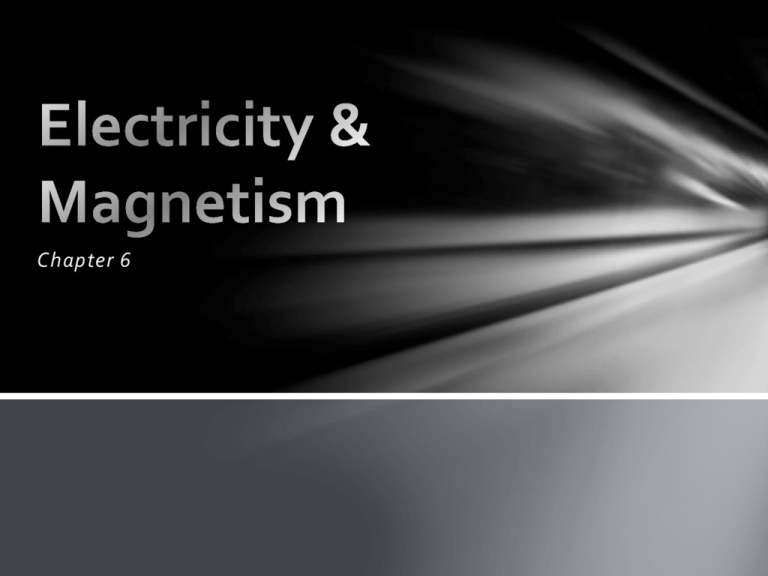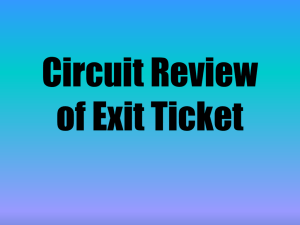Ch 6, Lesson 1 and 2 ppt
advertisement

Chapter 6 Chapter 6 Lesson 1 Electric charges: tiny particles that carry units of electricity Energy charges that are the same: like charges Energy charges that are different: unlike charges Most matter is electrically neutral, which means matter has an equal # of positive and negative charges Like charges = repel; they push away from each other Unlike charges = attract; they pull toward each other Unlike charges attract Like charges repel Why does this happen? Attract or repel? repell repell attract Electrically Neutral Negatively Charged Positively Charged Static electricity: an electric charge that build up on a material Example: When running a comb through your hair ( Negative particles Your hair loses The comb gains charge) comb charge and now has charges and now has charge. charge. Your hair and comb now have unlike charges. They attract each other. Each hair on your head now has a like charge. They repel each other. Chapter 6 Lesson 2 How charges move The build-up of electrical particles is called static electricity. The constant flow of electric charges is called electric current. This energy can be controlled and used. electrical current Conductors & Insulators Negatively charged particles move easily through materials called conductors. Electric current passes easily through some metals. Copper and silver are good conductors. Materials that electric charges do not flow through easily are called insulators. Materials such as plastic and rubber are good insulators. Conductors and insulators are used to control and direct electric flow. Conductor Insulator Circuits & Switches The pathway that an electric current follows is called an electric circuit. A circuit is a closed pathway. This closed, or complete pathway, has no gaps or openings. If there is an opening, we call that an open circuit, or incomplete circuit. Most circuits have a switch that opens and closes the circuit. When you flip the switch on, you close the circuit. The light bulb turns on. When you flip the switch off, you open the circuit. The light bulb goes off. Every working circuit has at least 3 parts: 1) A power source (battery) 2) A conductor ( usually wire) 3) An object to use electrical current 2 Types of Circuits – Series & Parallel Circuits A circuit can have many parts. It can have a switch or have more than one object using the electric current. Series Circuit: a circuit with parts connected so the electric current passes through each part along a single path. If you remove a part from the circuit, you create an opening. Current will no longer move through any of the parts. Parallel Circuit: a circuit where parts are connected so that the electric current passes along >1 pathway. If you remove one part from the circuit , current still moves through other parts. http://www.youtube.com/watch?v=ajmiqpwtJ_o What type of circuit would you want for Christmas tree lights? a. series b. parallel c. simple circuit d. simple circuit with a switch Draw, label, and color these circuits in your IN. Circuits Simple Circuit with Switch Switch on – close the circuit; light on Switch off – open the circuit; light off Series Circuit Parallel Circuit remove a part no current remove a part current still moves; >1 pathway Some electric objects run on batteries. A battery is made up of one or more electric cells. Electric cell: an object that changes chemical energy into electrical energy.




